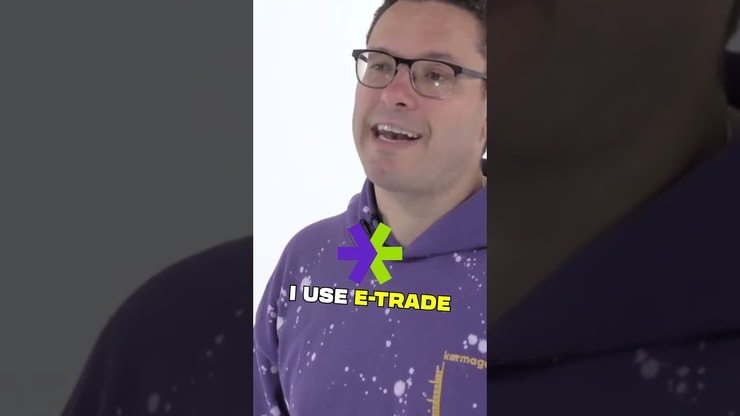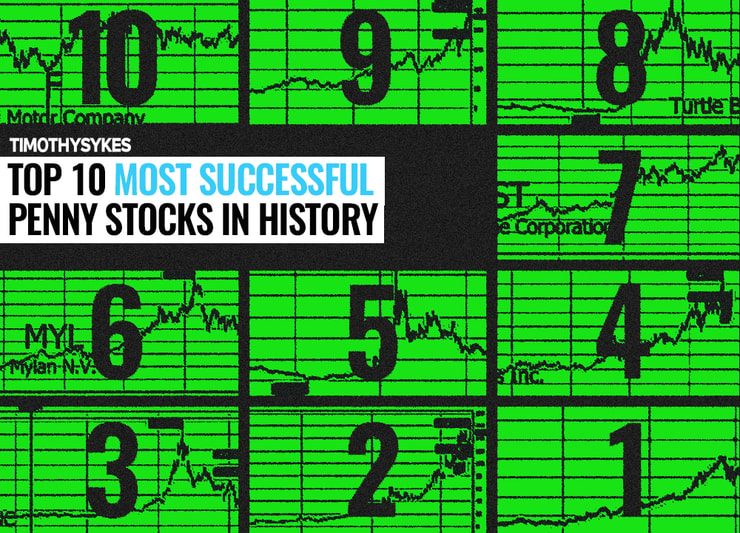This guide outlines the essentials of buying NVIDIA stock (NASDAQ: NVDA) in 2025, incorporating my experience in trading and market strategy. Remember, every trade should align with a well-thought-out plan and a clear risk-reward analysis. Buying NVDA can be a calculated move for traders looking to capitalize on a leading technology company’s growth in artificial intelligence, GPUs, and data centers.
You should read this article because it provides clear, actionable steps to help you confidently purchase NVIDIA stock.
I’ll answer the following questions:
- What are the steps to buy NVIDIA stock?
- Which brokerage platforms can I use to purchase NVIDIA shares?
- What factors should I consider before investing in NVIDIA?
- How can I evaluate NVIDIA’s financial health and market position?
- What are the potential risks and rewards of investing in NVIDIA?
- How does NVIDIA’s performance compare to its competitors?
- What is the outlook for NVIDIA’s growth in the coming years?
- How can I monitor and manage my investment in NVIDIA over time?
Let’s get to the content!
Table of Contents
- 1 NVIDIA Stock and Company Profile
- 2 Steps to Buy NVIDIA Stock
- 3 Where to Buy NVIDIA Stock
- 4 Is NVIDIA Stock a Good Buy?
- 5 How Much Does It Cost to Buy NVIDIA Stock?
- 6 When Is the Best Time to Buy NVIDIA Stock?
- 7 Key Takeaways
- 8 Frequently Asked Questions
- 8.1 Can I Buy NVIDIA Stock Directly from the Company?
- 8.2 Is NVIDIA Stock Suitable for Beginner Investors?
- 8.3 Will NVIDIA Stock Split?
- 8.4 Can You Buy NVIDIA Stock Through Fractional Shares?
- 8.5 Can I Buy NVIDIA Stock as Part of a Broader Stock Market Strategy?
- 8.6 Does NVIDIA Offer Dividends, and What Is Its Dividend Yield?
- 8.7 Are Analysts Recommending NVIDIA Stock in 2025?
- 8.8 Can Banks or Brokers Provide NVIDIA Investment Options?
- 8.9 Is Buying NVIDIA Stock a Good Step for Building My Finance Knowledge?
- 8.10 How Do NVIDIA’s Financial Results Impact Its Stock as a Security?
NVIDIA Stock and Company Profile
NVIDIA is a semiconductor company renowned for its innovation in graphics processing units (GPUs) and artificial intelligence (AI) computing. The company has carved a niche in data centers, gaming, and autonomous vehicle software, making it a staple in technology-focused portfolios. Its market cap often positions it among the giants of the tech sector, reflecting its substantial growth and valuation.
Check out the other AI stocks I’m watching here!
Understanding the fundamentals is critical. NVIDIA’s consistent earnings, increasing revenue, and market dominance make it attractive, but always evaluate the stock price and potential for returns against your strategy. Analyst ratings and price targets can provide additional context but shouldn’t replace your own analysis.
Stock splits can make high-priced stocks more accessible to smaller investors without changing the company’s valuation. NVIDIA’s history of stock splits demonstrates its efforts to maintain share liquidity and attract a diverse investor base. While another split may seem possible, it’s not guaranteed, as it depends on management’s future strategy and market dynamics. Reviewing past splits offers insights into how these decisions impact stockholders. Learn more about NVIDIA’s stock split history and its implications.
Steps to Buy NVIDIA Stock
Setting up a brokerage account is easy! Here’s how:
Open a Brokerage Account
To buy NVIDIA stock, start by choosing a reputable brokerage platform. Look for trading platforms that offer competitive fees, robust tools for market analysis, and access to a wide range of securities, including individual stocks, ETFs, and options. Popular brokers like Charles Schwab and others cater to traders at different levels.
Fund Your Account
Once your brokerage account is active, deposit funds. This step is straightforward but requires planning to ensure your portfolio allocation aligns with your trading goals. Using excess funds rather than over-leveraging is essential to managing risk.
More Breaking News
- WBD Stock Surges: Future Prospects Analyzed
- Is Sea Limited Stock a Bargain?
- Warner Bros. Stock Tumbles: What’s Next?
Search for NVIDIA’s Stock Symbol (NVDA)
Navigate your broker’s platform to search for NVIDIA’s ticker symbol, NVDA. Familiarize yourself with the current market price, historical performance, and trading volume. These metrics help you understand the stock’s liquidity and potential for price movement.
Determine how many shares you want to buy based on your account balance and risk tolerance. Small positions reduce risk in volatile markets, allowing you to manage potential losses effectively. Focus on learning and adapting as you trade.
Place Your Order (Market or Limit)
Choose between a market order, which executes immediately at the current stock price, or a limit order, which executes only at a specified price. Limit orders are useful for maintaining control, particularly in volatile market conditions.
Where to Buy NVIDIA Stock
NVIDIA stock is available through pretty much any broker that lets you buy stocks on Nasdaq—Charles Schwab, Fidelity, Robinhood etc. These brokers offer access to NVDA along with educational tools and advanced features for market analysis.
There is no “best broker” out there—but you’ll notice when you get screwed by outages and poor executions. You’re not getting married, shop around until you find a broker you like.
Is NVIDIA Stock a Good Buy?
Whether NVIDIA stock is a good buy depends on your strategy and the current market conditions. NVIDIA’s leadership in AI and computing positions it well for growth, but the stock price can be volatile. Use technical analysis to identify buying opportunities and set price targets based on historical resistance and support levels. Avoid overexposure to any single stock, especially in a dynamic sector like technology.
NVIDIA’s focus on artificial intelligence, gaming, and data centers puts it at the forefront of high-growth industries. These sectors rely on cutting-edge technology, and NVIDIA has consistently delivered innovative solutions to meet these demands. Its ability to adapt and develop new technologies makes it a strong contender for long-term investors. However, before making a decision, consider the stock’s valuation and its potential for future returns within these markets. For a detailed look into whether NVIDIA stock is worth buying, refer to this comprehensive breakdown of NVDA’s investment potential.
How Much Does It Cost to Buy NVIDIA Stock?
The cost to buy NVIDIA stock is tied to its share price and your broker’s fees. If NVDA trades at $120—where it is trading at the time of writing—purchasing 10 shares would require $1,200, excluding any transaction costs. Fractional shares, offered by some brokers, allow smaller investments, making it more accessible to beginners.
NVIDIA uses stock buybacks to return value to its shareholders. Buybacks reduce the total number of outstanding shares, potentially increasing the value of each share over time. This approach complements its focus on growth, ensuring that shareholder returns are balanced with reinvestment in innovation. Understanding these buybacks is essential for evaluating NVIDIA’s overall financial strategy. For more about how NVIDIA executes its buybacks, see this detailed explanation of NVDA’s buyback initiatives.
When Is the Best Time to Buy NVIDIA Stock?
Timing your purchase requires patience and observation. Track NVDA’s price action, earnings releases, and broader market trends. Periods of market correction or pullbacks often present buying opportunities, but only act when your strategy aligns with the setup.
The most important thing is knowing precisely when to buy — and for that it’s important to use a trading platform with real-time data.
When it comes to trading platforms, StocksToTrade is first on my list. It’s a powerful day and swing trading platform that integrates with most major brokers. I helped to design it, which means it has all the trading indicators, news sources, and stock screening capabilities that traders like me look for in a platform.
Grab your 14-day StocksToTrade trial today — it’s only $7!
Key Takeaways
- NVIDIA is a leading semiconductor company with strong growth prospects in AI, gaming, and data centers.
- Buying NVDA requires a brokerage account, sufficient funds, and a clear understanding of market conditions.
- Use limit orders to control risk and fractional shares for flexibility.
- Focus on market analysis, not hype, to determine if NVDA fits your strategy.
Trading isn’t rocket science. It’s a skill you build and work on like any other. Trading has changed my life, and I think this way of life should be open to more people…
I’ve built my Trading Challenge to pass on the things I had to learn for myself. It’s the kind of community that I wish I had when I was starting out.
We don’t accept everyone. If you’re up for the challenge — I want to hear from you.
Apply to the Trading Challenge here.
Trading is a battlefield. The more knowledge you have, the better prepared you’ll be.
Are you ready to buy NVIDIA in 2025? Write “I’ll keep it simple Tim!” in the comments if you picked up on my trading philosophy!
Frequently Asked Questions
Can I Buy NVIDIA Stock Directly from the Company?
No, NVIDIA does not offer a direct stock purchase program. You must use a brokerage to trade NVDA shares.
Is NVIDIA Stock Suitable for Beginner Investors?
NVIDIA’s solid fundamentals make it a popular choice, but its stock price volatility can be challenging. Beginners should prioritize risk management and start with small positions.
Will NVIDIA Stock Split?
Stock splits are possible but not guaranteed. NVIDIA’s last split occurred in 2021. Such actions depend on the company’s valuation strategy.
Yes, many brokers allow the purchase of fractional shares, enabling you to invest in NVIDIA with a smaller amount of capital.
Every trade is a lesson. Stay disciplined, keep learning, and adapt as market conditions change. Trading is a journey, not a destination.
Can I Buy NVIDIA Stock as Part of a Broader Stock Market Strategy?
Yes, NVIDIA stock can fit into a diversified stock market strategy, particularly for those focused on technology companies. Its performance is closely tied to advancements in AI, gaming, and data centers, making it a strong candidate for growth-focused portfolios. However, consider balancing your investments across sectors to mitigate risks tied to individual industries.
Does NVIDIA Offer Dividends, and What Is Its Dividend Yield?
NVIDIA does pay dividends, but its dividend yield is relatively low compared to income-focused securities. The company prioritizes reinvesting earnings into growth opportunities in AI and hardware, reflecting its focus on innovation. For those seeking income, consider balancing NVIDIA with bonds or dividend-heavy stocks.
Are Analysts Recommending NVIDIA Stock in 2025?
Many analysts remain bullish on NVIDIA due to its leadership in the AI and hardware space, but recommendations vary with market conditions. Analyst ratings often provide price targets and insights into financial markets, but they should complement, not replace, your independent research. Use recommendations as a guide while aligning with your investment strategy.
Can Banks or Brokers Provide NVIDIA Investment Options?
Banks do not directly sell NVIDIA stock but can provide access through financial products like ETFs or mutual funds. Brokers remain the primary channel for buying individual shares or exploring derivatives like futures. Evaluate the tools and securities each offers to match your trading or investing goals.
Is Buying NVIDIA Stock a Good Step for Building My Finance Knowledge?
Buying NVIDIA stock can be a practical way to learn about finance, particularly through the lens of buying stocks and monitoring their performance. Observing the company’s results, market trends, and the role of security analysis can enhance your understanding of how financial markets operate. Start small, prioritize education, and treat each trade as an opportunity to grow your knowledge.
How Do NVIDIA’s Financial Results Impact Its Stock as a Security?
NVIDIA’s financial results, such as quarterly earnings and revenue growth, directly influence its stock price as a traded security. Positive results often lead to price increases, while disappointing outcomes can trigger a decline, reflecting investor sentiment. Staying updated on these metrics is crucial for timing trades and making informed decisions.










Leave a reply